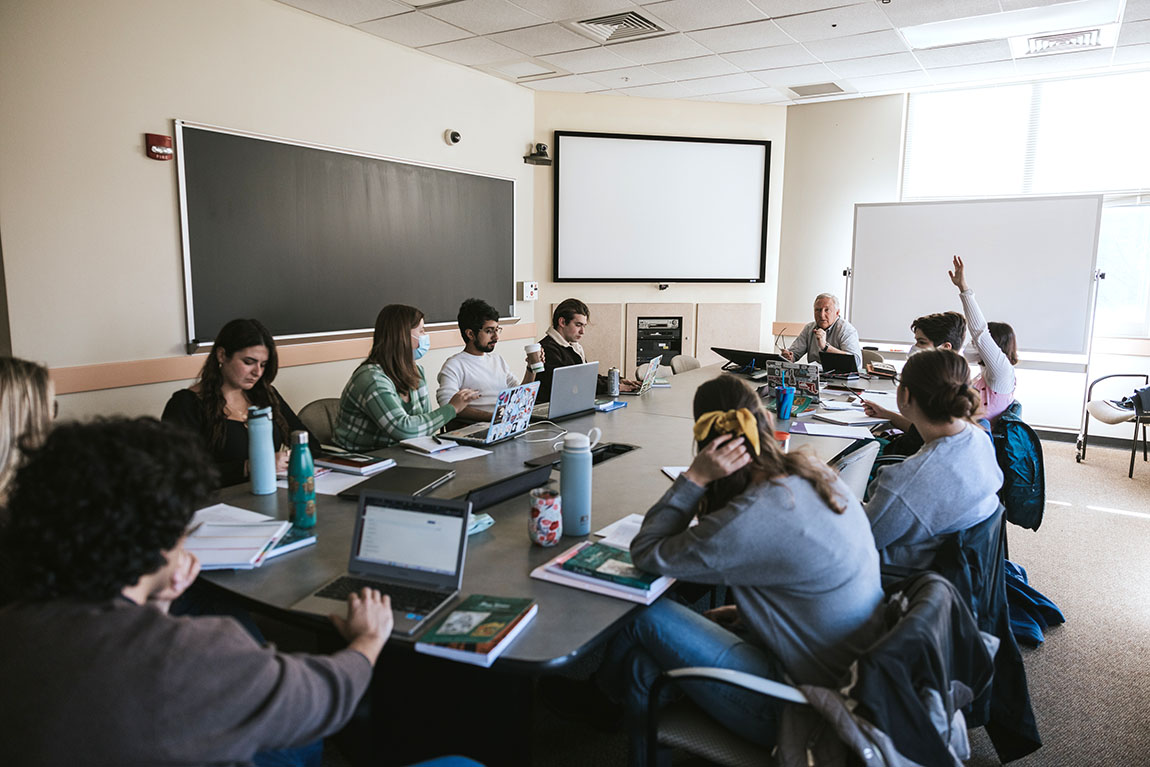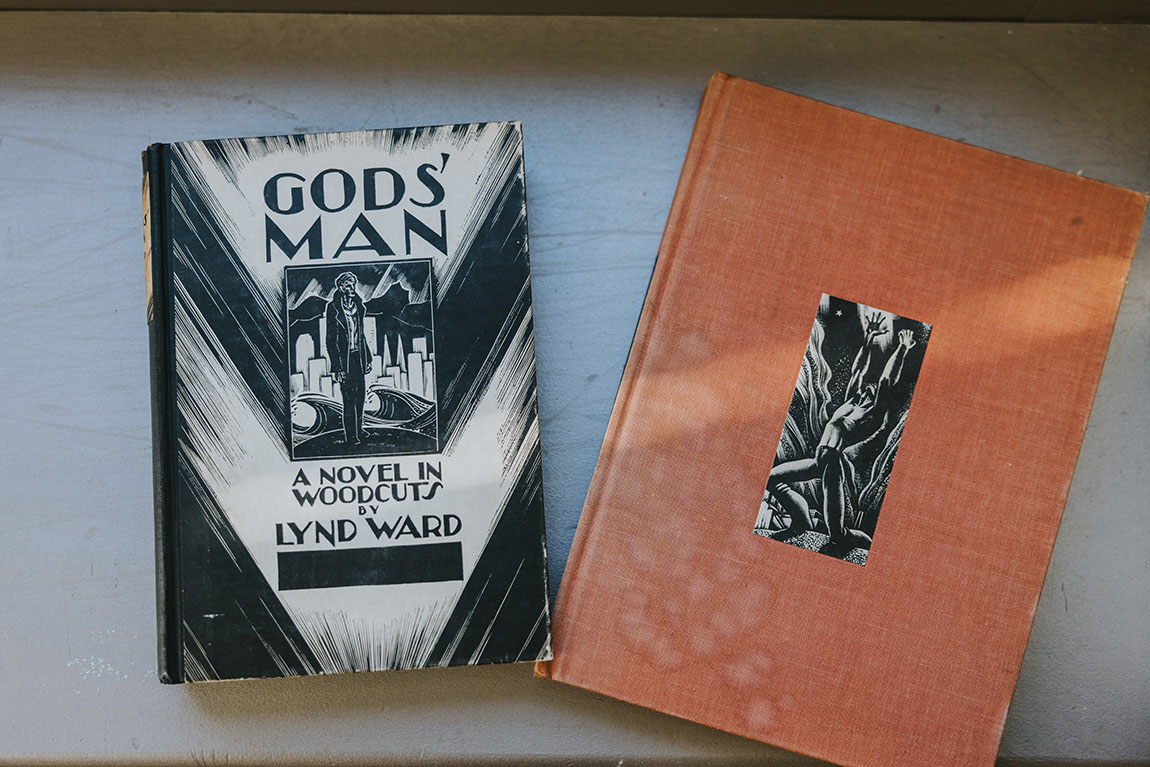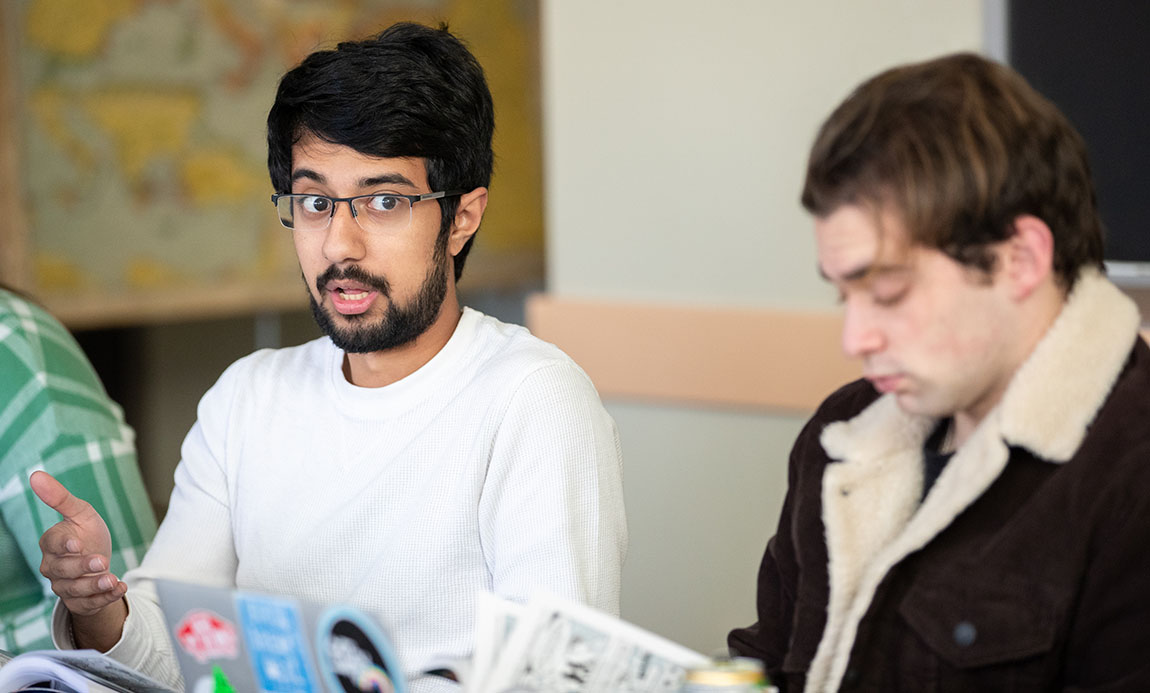Moving Beyond Language
Professor of English Grant Scott is supporting senior English majors as they learn to analyze and critique novels that contain only images.By: Meghan Kita Friday, November 11, 2022 10:40 AM
 Professor of English Grant Scott teaches senior English majors in Picture Stories. Photos by Marco Calderon
Professor of English Grant Scott teaches senior English majors in Picture Stories. Photos by Marco CalderonHow do you read a book that doesn’t have any words? Students in Professor of English Grant Scott’s new course Picture Stories are learning. It’s been a challenge, one the students have tackled with enthusiasm and energy.
“My training as an English major has been very dependent on language,” says Faith Maldonado ’23, who is also a Spanish and philosophy double minor. “It’s been helpful to realize that every image is literary, in a sense. The same type of techniques you use for close readings of words — looking for patterns and anomalies — you can use for images.”

Scott developed Picture Stories, a Culminating Undergraduate Experience (CUE) course for senior English majors, after writing Lynd Ward’s Wordless Novels, 1929-1937, a critical study that Routledge published in May. Ward’s books, many of which deal with socialism and labor rights, consist of a series of images that were originally engraved on woodblocks and printed on pages in chronological order to tell a story.
Scott included one of Ward’s works, Madman’s Drum, in a course nearly a decade ago, and one of his students, Logan McCabe ’16, found it so interesting that he completed an independent study of Ward’s works with Scott and former Professor of English David Rosenwasser as his directors.

“I remember being very skeptical about the project, that you could go terribly far with it. To [McCabe’s] great credit, he convinced me Ward deserved a second, third and fourth look,” Scott says. “He inspired me to delve deeper into this project.”
McCabe’s independent study helped Scott realize how little had been written about Ward’s work, which led Scott to write his book. And Scott used what he learned in the writing process to build the Picture Stories course.

The course begins with students “reading” the woodcut wordless novels that were created during the Great Depression, some in the United States (like Ward’s) and some in Europe. Then, students turn to more modern graphic novels, including one from the 1970s (Martin Vaughn-James’ The Cage) and others from the last two decades (including Alison Bechdel’s canonical Fun Home). Scott wanted students to understand both how the wordless novel set the stage for the modern graphic novel and also to hear from a wider variety of authors than a course focused solely on the male-dominated wordless novel would allow.
Muntasir Ali ’23 (pictured above, at left), an English and economics double major and political science minor, grew up reading comic books, and before taking this course, he thought of graphic novels as childish. Not anymore: “The works we’re reading are very mature,” he says. “It’s a really cool and unique experience to go through the evolution of the graphic novel and to see it unfold in the way we are right now.”

